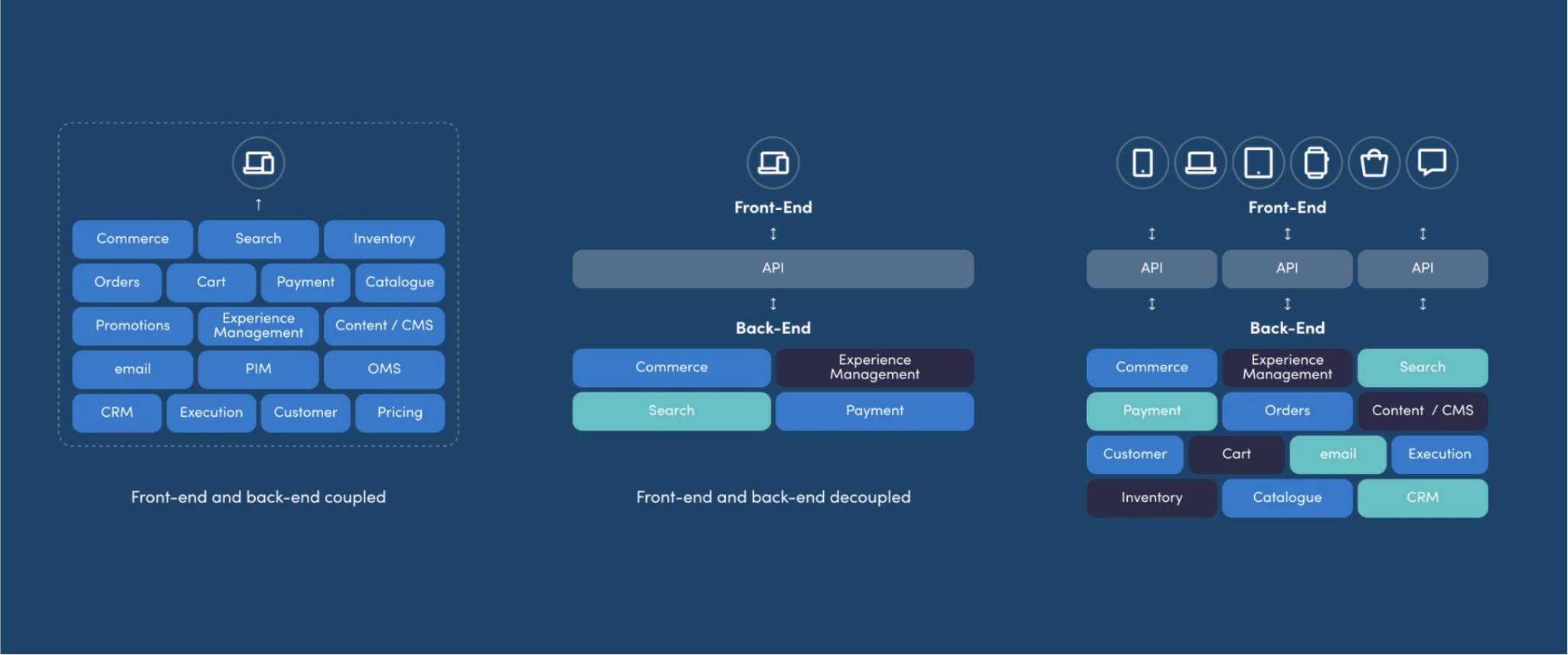Headless vs. Composable Commerce: The Origins of Modern Commerce

When digital commerce first emerged, brands operated two separate sales channels: in-store and online. As digital gained popularity and the role of digital experiences in people's lives solidified, business models were slow to change, and digital commerce began to lag behind. This made it difficult for brands to see upcoming consumer trends, and even when they could, the technology supporting their digital experiences lacked the flexibility to capture those trends in time.
To address this, retailers began separating their backend services from their frontend experiences. The logic was that if the technology stack was too rigid to meet the changing market, then separating parts of it—making it more flexible and accessing the backend through APIs—could solve that issue.
This decoupling of services from experiences is known as headless commerce. It allows brands to maintain their complex e-commerce backend systems while building a more flexible frontend to meet the needs of the changing market. For example, if the rigidity of content models makes it difficult to update information about new products, headless commerce allows the integration of a different content management system with customizable content models into the current system, alleviating that pain point.

This change in architecture—where a headless frontend drives digital experiences while the robust and singular backend continues to support all business operations—gave brands the ability to create more memorable customer experiences. With the emergence of headless commerce, brands could update their sites with better text and images or even extend their website platform to mobile applications. This was a significant advancement for digital experiences, but digital business models continued to evolve.
Evolving Business Models: Digital Commerce Is Happening Everywhere
The biggest problem with a headless architecture over an all-in-one platform is that it makes it difficult for brands to innovate in their business models. Retailers were constantly being outpaced by more flexible competitors. With the increasing demand for services like subscriptions, same-day deliveries, and the option to buy online and pick up in-store (BOPIS), driven by brands that sell directly to consumers and are not constrained by traditional retail models or outdated systems, retailers using all-in-one platforms faced the challenge of quickly adapting to avoid falling behind.
How were newcomers able to break through so easily? By using a new approach called composable commerce.
Headless commerce and composable commerce are often seen as the same, but there are important distinctions between the two. Headless commerce simply means that a service previously coupled with an all-in-one system has been decoupled so that frontends and backends can operate independently. However, with composable architectures, each component is independent and assembled into an optimized system. This means that brands can choose each element of their digital services to better meet the needs of their specific business model.


